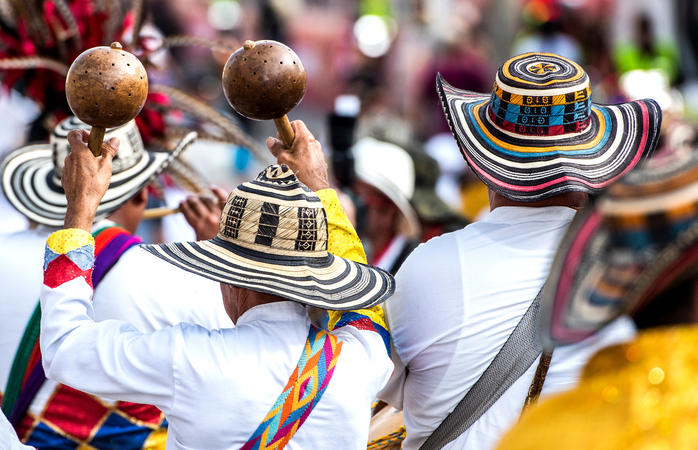Music encourages people from anywhere in the world to dance. Who can resist dancing to a good song? You don’t have to understand the language; let the music take you and get ready to learn these fantastic dances of the world.
#1. Footwork, Chicago (United States)

The name of the dance says it all (footwork means “movement of the feet”). This dance was created in Chicago in the eighties, and the perfect background music to perform it is characterized by the fast beats, the pounding rhythm, and low sounds of the Chicago juke groups. Names like RP Boo and DJ Rashad, pioneers in footwork music and dance, are true legends of the footwork world. Footwork knows no borders! Groups of dancers like THE ERA have brought footwork to all corners of the world. Dancing is only achieved with a lot of practice, even the most basic steps like mikes, running men, or skates. It has a similar vibe to break dancing, so you can join the dance and show the people of Chicago how fast you can move your feet.
#2. Cumbia, Cartagena (Colombia)

The exact origins of the cumbia remain a mystery. Cities on the Caribbean coast of Colombia such as Barranquilla or Cartagena compete for the title of creator city of cumbia, showing viewers the different regional styles of dance. Many scholars recognize the origin in the cumbia’s three ethnic groups, a mixture of indigenous peoples’ folk heritage, African slaves, and European settlers. The cumbia is a sensual courtship dance. The woman performs sensual hip movements, lifts the ends of the skirt, and, perhaps with a candle in her hands, takes short steps where the feet barely rise from the ground while her partner dances around doing fan movements.
#3. Frevo, Olinda (Brazil)

The term “frevo” comes from the Portuguese word ferver, which means “to boil.” And that already says a lot about this energetic dance. Frevo dancers mix about 120 different movements with acrobatics, leg raises, and capoeira steps. If you want to see passistas (dancers) in full action and dressed in striking red, blue and yellow costumes and green umbrellas, go to the state of Pernambuco, especially during the Olinda carnival. Its origins date back to the beginning of the 20th century, although it was the dancer Nascimento do Passo who made it famous in the 1950s. The last merit received was frevo’s appointment as an intangible cultural heritage of humanity by Unesco in 2012.
#4. Hopak, Kiev (Ukraine)

Get ready to work your legs with the characteristic hopak jumps, the national dance of Ukraine. The term hopaty means “to jump,” and this dance has made Ukrainians jump since the 16th century. The military performed it, and soldiers often celebrated victories by depicting battle scenes through a dance punctuated by acrobatic leaps. Formerly it was only a masculine display of testosterone and ostentation; today, women participate in the dance wearing traditional costumes and dancing in unison while men perform the characteristic open leg jumps and squats.
#5. Kathakali, Kochi (India)

A little bit of dancing, a bit of acting, and a whole lot of makeup are the perfect ingredients for an awesome kathakali show. Near the Chinese fishing nets in Fort Kochi, performers float across the stage to the percussion rhythm, decked out in ornate costumes and performing precise, graceful movements. There’s a good reason they spend an hour and a half putting on makeup. By only moving their mouth and eyes, the dancers make nine facial expressions that evoke emotions such as fear, love, or anger. In the seventeenth century, this show that combines dance and theater took place by candlelight throughout the night until the candles were utterly consumed. Fortunately, you can now enjoy a shorter version in the Kerala Kathakali Center in Kochi.
Do you need more inspiration? Stay tuned for the second part of this article!

Leave a Reply
You must be logged in to post a comment.